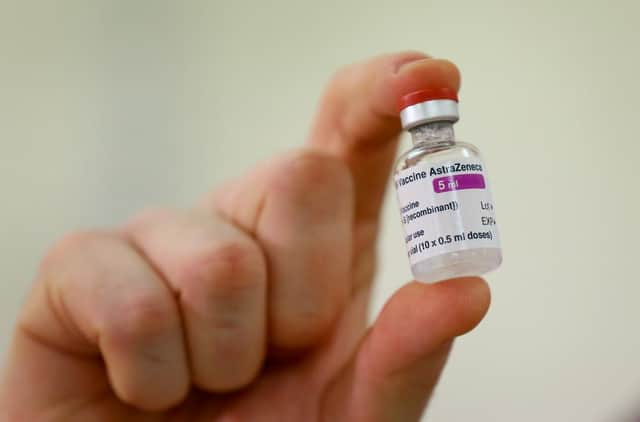Oxford Covid vaccine UK: where is the jab made, are there side effects - and how many doses have been ordered?


The Covid-19 vaccine created by Oxford University and AstraZeneca is being distributed to patients across the UK.
Brian Pinker, an 82-year-old Dialysis patient, became the first person to receive the newly-approved vaccine on Monday 4 January.
Advertisement
Hide AdAdvertisement
Hide AdIn some welcome news during the fight against coronavirus, the vaccine - found to be 70 per cent effective on average - was approved for public use by the Medicines and Healthcare products Regulatory Agency (MHRA) on 30 December.
So, where is the Oxford/AstraZeneca vaccine manufactured - and are there any side effects?
Where is the vaccine made?
Alongside the Pfizer/BioNTech vaccine, the Oxford/AstraZeneca jab will be administered to patients in the UK over the coming months.
The vaccine was developed at Oxford University over about 10 months, and the UK has ordered millions of doses.
However, while the “vast majority” of these doses will be produced in the UK, the initial batches of the jab are being made elsewhere in Europe.
Manufacturing lead for the UK’s Vaccine Taskforce, Ian McCubbin, said: “The initial supply – and it’s a little bit of a quirk of the programme – actually comes from the Netherlands and Germany.
“But once that’s supplied, which we expect will be all by the end of this year, then the remainder of the supply will be a UK supply chain.”
Manufacturing the vaccine from inside Britain could be important to avoid any hold-ups or disruption at ports following the end of the Brexit transition period on 31 December.
How many doses have been ordered?
Advertisement
Hide AdAdvertisement
Hide AdThe UK Government has ordered a total of 100 million doses of the Oxford/AstraZeneca vaccine.
That is enough to vaccinate 50 million people, since the jab will be administered in two doses.
Forty million doses of the Pfizer/BioNTech vaccine have also been ordered - enough to immunise 20 million people.
It is hoped that two million people a week could be vaccinated using the two approved jabs.
Are there any side effects?
The Oxford/AstraZeneca vaccine has been shown to be safe in trials, with only minor side effects observed.
This included injection-site pain, mild fever, muscle ache and headache, according to findings from the phase two safety trial which were published in The Lancet in November.
These short-term side effects are common with many vaccines - and more serious, adverse effects have not been reported.
The side effects were also “less common” in adults aged 56 and older, compared to younger adults.
Advertisement
Hide AdAdvertisement
Hide AdAny dangerous side effects after taking the vaccine should have become apparent in clinical trials.
However, there’s a possibility that rarer side effects may emerge as millions of people are given the vaccine.
Advice for pregnant women to avoid being vaccinated has also been amended, with those who are at risk from Covid able to receive a jab.
And people with allergies can also receive the Oxford/AstraZeneca vaccine, unless they are allergic to any of the specific ingredients.
Regulators have said they will “rigorously assess” the Oxford/AstraZeneca vaccine data and evidence submitted on the vaccine's safety and effectiveness.
The Pfizer/BioNTech vaccine can also produce mild side effects, but no serious safety concerns were reported after the jab was tested on 43,500 people.
People became worried after two NHS workers in the UK had an allergic reaction to the jab - but they are now fine.
Reactions to vaccines are not uncommon, and can happen with others like the annual flu jab.
How does the Oxford vaccine work?
Advertisement
Hide AdAdvertisement
Hide AdThe vaccine is made from a weakened version of a common cold virus, known to infect chimpanzees.
It has been scientifically modified to look like coronavirus, but it can’t cause illness.
When the vaccine is injected, the immune system is instructed to produce antibodies in defence against the virus.
Then, if a vaccinated person is infected with coronavirus, their immune system will be primed and ready to respond to fight it off.